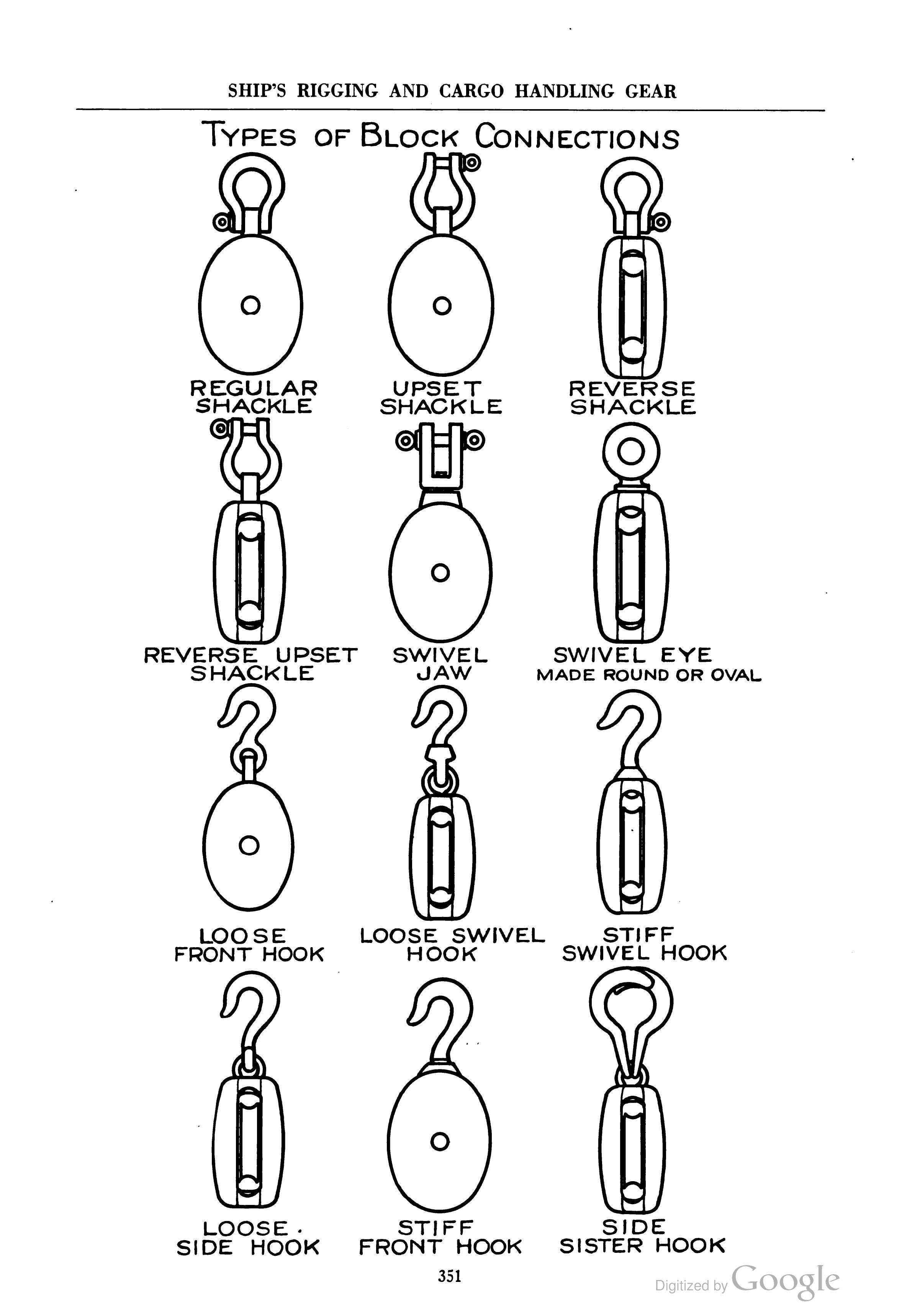Block (sailing) on:
[Wikipedia]
[Google]
[Amazon]
 In
In
File:MaryRose-rigging blocks2.JPG, Various types of blocks of both wood and metal found on the 16th century ship ''
 In
In sailing
Sailing employs the wind—acting on sails, wingsails or kites—to propel a craft on the surface of the ''water'' ( sailing ship, sailboat, raft, windsurfer, or kitesurfer), on ''ice'' ( iceboat) or on ''land'' ( land yacht) over a chose ...
, a block is a single or multiple pulley. One or a number of '' sheaves'' are enclosed in an assembly between ''cheeks'' or ''chocks''. In use, a block is fixed to the end of a line, to a spar
SPAR, originally DESPAR, styled as DE SPAR, is a Dutch multinational that provides branding, supplies and support services for independently owned and operated food retail stores. It was founded in the Netherlands in 1932, by Adriaan van Well ...
, or to a surface. A line (rope) is ''reeved'' through the sheaves, and maybe through one or more matching blocks at some far end, to make up a tackle
Tackle may refer to:
* In football:
** Tackle (football move), a play in various forms of football
** Tackle (gridiron football position), a position in American football and Canadian football
** Dump tackle, a forceful move in rugby of picking ...
.
The ''purchase'' of a tackle refers to its mechanical advantage
Mechanical advantage is a measure of the force amplification achieved by using a tool, mechanical device or machine system. The device trades off input forces against movement to obtain a desired amplification in the output force. The model for ...
. In general the more sheaves in the blocks that make up a tackle, the higher its mechanical advantage. The matter is slightly complicated by the fact that every tackle has a ''working end'' where the final run of rope leaves the last sheave. More mechanical advantage can be obtained if this end is attached to the moving load rather than the fixed end of the tackle.
There are various types of blocks that are used in sailing. Some blocks are used to increase mechanical advantage and others are used simply to change the direction of a line. A ''ratchet block'' turns freely when a line is pulled in one direction but does not turn the other direction, although the line may slip past the sheave. This kind of block makes a loaded line easier to hold by hand, and is sometimes used on smaller boats for lines like main and jib sheets that are frequently adjusted.
A single, large, sail-powered warship in the mid-19th century required more than 1,400 blocks of various kinds.
Mary Rose
The ''Mary Rose'' (launched 1511) is a carrack-type warship of the English Tudor navy of King Henry VIII. She served for 33 years in several wars against France, Scotland, and Brittany. After being substantially rebuilt in 1536, she saw her ...
''
File:Bird on block.jpg, A bird perched near a wooden block
File:Harken 57C block.jpg, A modern single block made of stainless steel and reinforced plastic. The ball bearing is made of Delrin (polyoxymethylene
Polyoxymethylene (POM), also known as acetal, polyacetal, and polyformaldehyde, is an engineering thermoplastic used in precision parts requiring high stiffness, low friction, and excellent dimensional stability. As with many other synthetic ...
)
File:Kanifas ze statku Lwow.jpg, Snatch block with wood cheeks and sheave
Sailing terms in everyday English
; Chock a' block : Refers literally to the situation where pulling on the working line will not raise the load any further because the cheeks of one lifting block are already against the other. Figuratively this has come to mean that something is as full or as close as it can be.See also
*Block and tackle
A block and tackle or only tackle is a system of two or more pulleys with a rope or cable threaded between them, usually used to lift heavy loads.
The pulleys are assembled to form blocks and then blocks are paired so that one is fixed and ...
* Two six heave
* Portsmouth Block Mills
* Pulley
References
{{Sail Types Sailing rigs and rigging